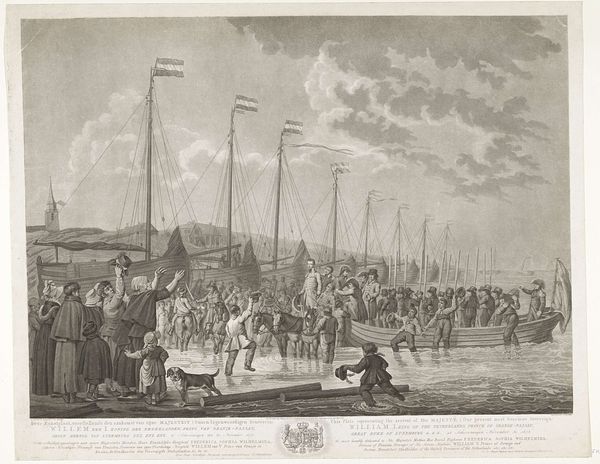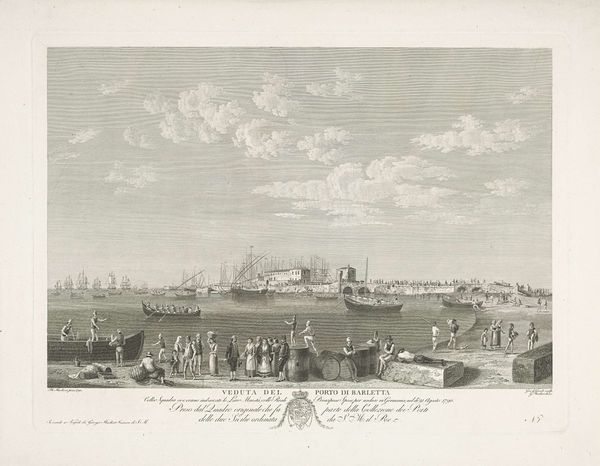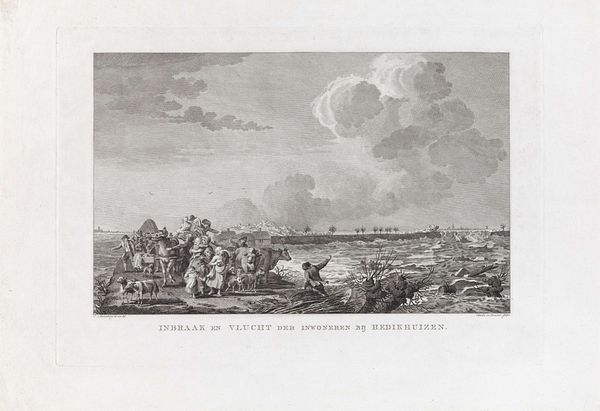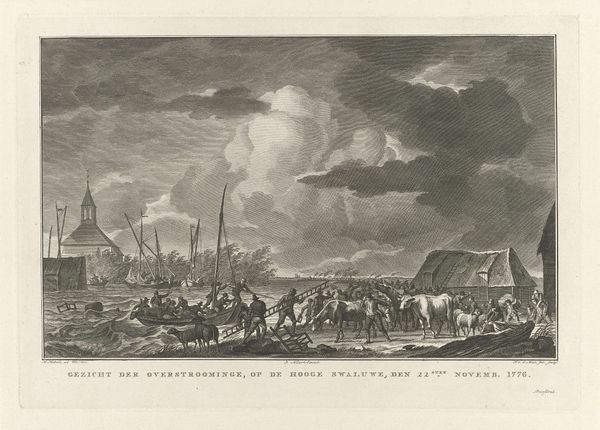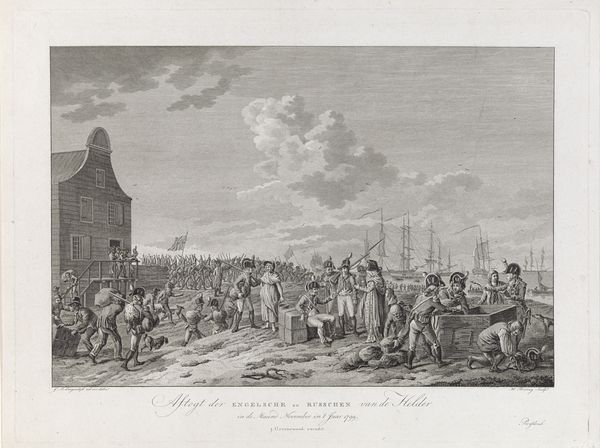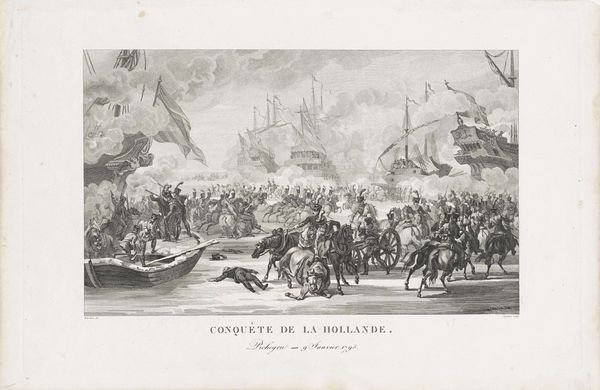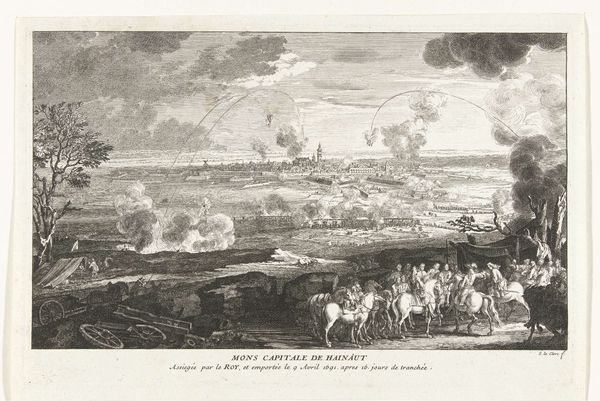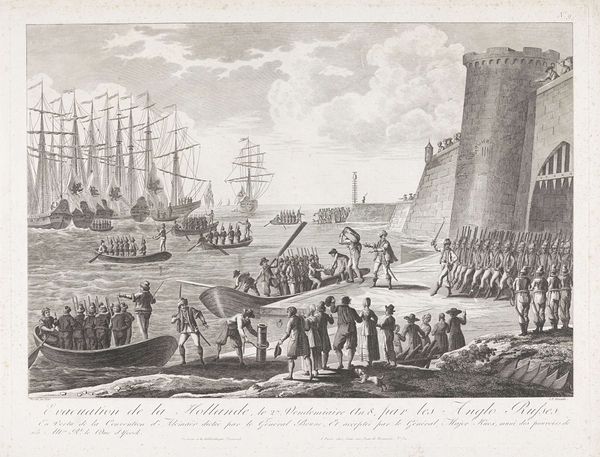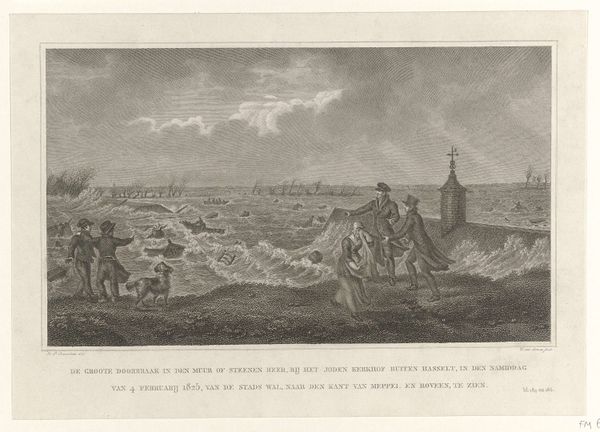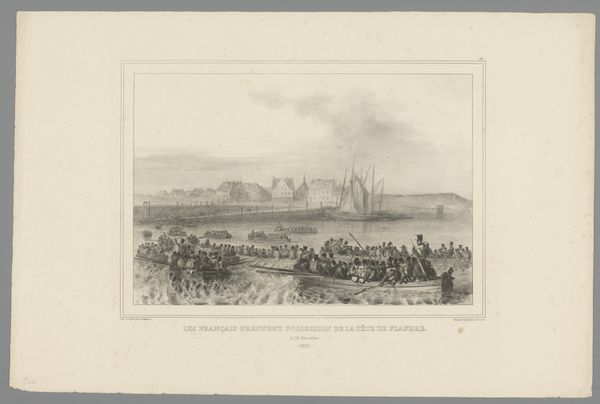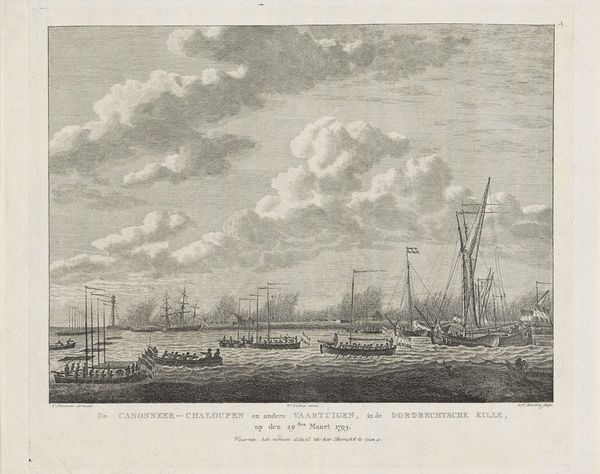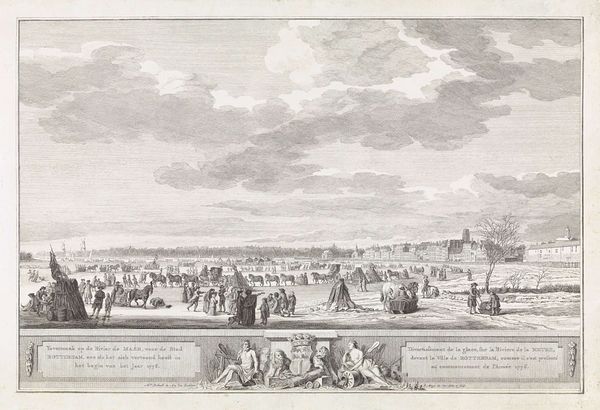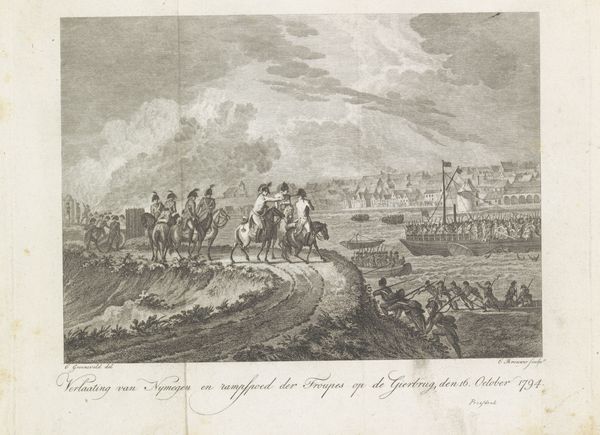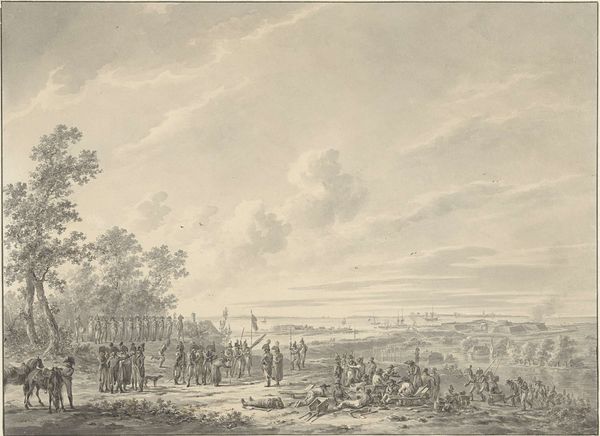
print, engraving
#
neoclacissism
# print
#
old engraving style
#
landscape
#
pencil drawing
#
history-painting
#
engraving
#
realism
Dimensions: height 334 mm, width 428 mm
Copyright: Rijks Museum: Open Domain
Curator: Here we have “Vertrek van de Britten uit Noord-Holland, 1799,” or “Departure of the British from North Holland, 1799,” an engraving made sometime between 1800 and 1825 by Jacques Couché. Editor: It's an arresting image. Despite being rendered in such a limited tonal range, the eye is immediately drawn to the orderly yet bustling scene of figures embarking onto waiting ships. It feels quite calculated. Curator: Indeed, the scene is ripe with symbolism of power, loss, and perhaps even forced migration. The date itself—1799—is crucial. This piece gives us visual access to a specific historical moment in the wake of the Batavian Republic. We can explore narratives of colonialism and resistance by analysing its composition. What do you notice about the deployment of figures? Editor: What jumps out is the precision of line. Look at the sheer labor involved in creating the fine details across such a large surface of figures. There is also a sense of industrial order in how the British forces line up, almost mirroring the disciplined arrangement of the ships themselves. One could spend considerable time cataloging how those ships were constructed, what materials were required. Curator: It seems the artist wants us to reflect on this. The choice of engraving underscores a certain historical record-keeping. By showing the very clear hierarchy embedded in its social strata it’s like stepping into a sociology textbook of the time. The landscape and bodies themselves almost feel secondary, rendered into components of this vast project of forced removal. Editor: Absolutely, the engraving medium allowed for dissemination, becoming a portable means of distributing a message. In many ways, the process of producing an engraving itself mirrors the industrial processes it depicts; a clear division of labour. How many sets of hands touched this artwork, and what materials were used in the inking process? All those social, artistic, and industrial considerations combine. Curator: Ultimately, examining a piece like Couché's "Departure" allows us to excavate layers of social commentary while opening discussions about empire and the people who resist its grip. Editor: For me, considering how the print was fabricated, the economic exchange embedded within it—gives us a richer material understanding of that specific historical moment, while hopefully allowing us to question and broaden the term "fine art."
Comments
No comments
Be the first to comment and join the conversation on the ultimate creative platform.
